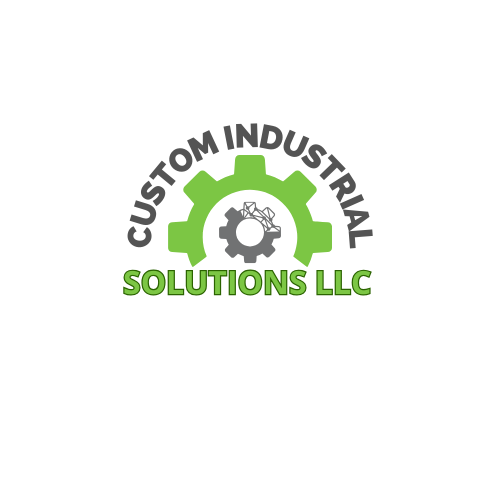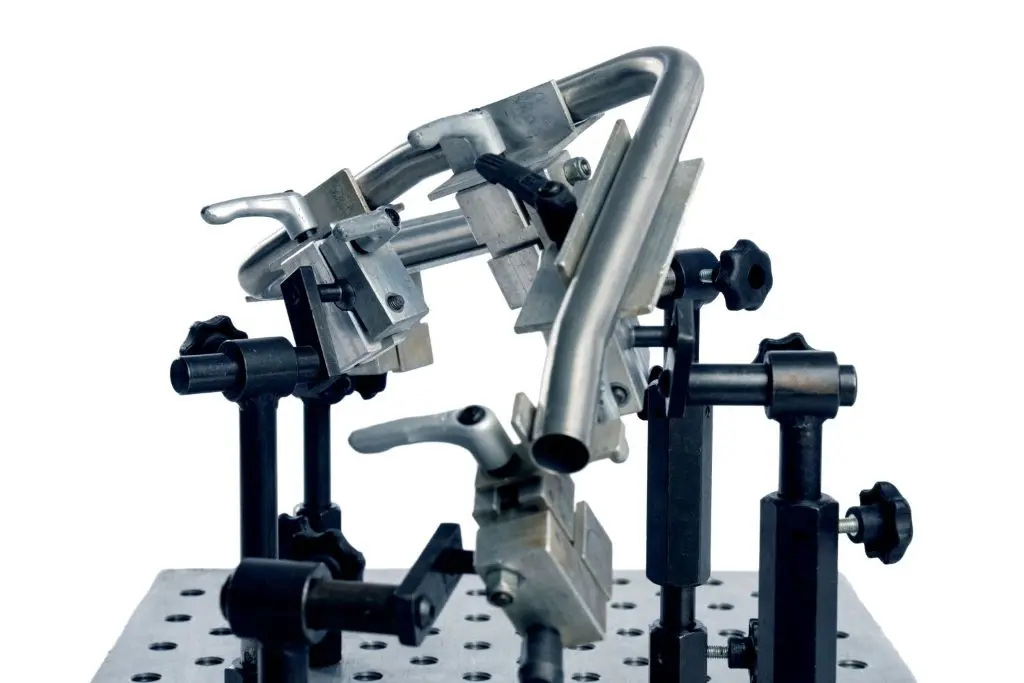I. Introduction
In the high-stakes world of aerospace manufacturing, precision isn’t just a goal—it’s a necessity. Every component, from fuselage frames to avionics housings, must meet exacting specifications to ensure safety, performance, and compliance with rigorous industry standards. This is where custom assembly fixtures become indispensable.
Assembly fixtures are specialized tools used to hold, support, and align parts during the manufacturing and assembly process. In aerospace, where materials are often lightweight composites and geometries can be complex, off-the-shelf solutions simply won’t cut it. Custom-designed fixtures are tailored to the specific part and process, ensuring tight tolerances and repeatable accuracy across production runs.
As aerospace companies push for faster turnaround times and higher reliability, custom fixtures offer a critical edge—improving quality, reducing cycle time, and enhancing operator safety. Whether in manual assembly or automated systems, these tools are key enablers of modern aerospace production.
II. What Are Assembly Fixtures?
Assembly fixtures are engineered tools or devices used to precisely position and hold components in place during manufacturing or assembly processes. Their primary function is to ensure consistency, accuracy, and repeatability when assembling parts—especially critical in industries like aerospace where even the smallest misalignment can lead to major performance or safety issues.
Fixtures differ from jigs in that they generally hold the part steady while tools or operations are performed around it. In aerospace applications, fixtures might be used to align fuselage sections, secure turbine components, or support wing assemblies during bonding or fastening. They are often custom-built to suit the geometry, material, and assembly method of the specific part they support.
Common types of fixtures include alignment jigs, locating pins, clamping systems, and modular frames. Some are manually operated, while others integrate pneumatic, hydraulic, or even robotic systems for enhanced functionality. Regardless of complexity, their goal is the same: to streamline the assembly process while maintaining the highest standards of accuracy and safety.
III. Key Benefits of Custom Fixtures in Aerospace
Custom assembly fixtures provide a range of benefits that are especially valuable in aerospace manufacturing, where precision, safety, and efficiency are paramount. Unlike generic or modular tooling, custom fixtures are designed to match the exact specifications of a particular part or assembly process, ensuring a level of consistency and control that’s hard to achieve otherwise.
Precision and Repeatability
One of the most significant advantages is the ability to maintain tight tolerances and dimensional accuracy across multiple production cycles. Aerospace components often have complex geometries and must interface seamlessly with other parts. Custom fixtures ensure that every unit is held in the exact same position, minimizing variation and reducing the risk of misalignment or assembly errors. This precision is especially critical for load-bearing or flight-critical structures, where deviations can compromise safety or performance.
Reduced Assembly Time and Labor Costs
By streamlining how parts are held, aligned, and accessed, custom fixtures can significantly cut down on setup time and manual adjustments. Technicians spend less time repositioning parts or verifying alignment, and automated systems benefit from more reliable reference points. This efficiency not only accelerates the overall build process but also lowers labor costs—particularly important in high-mix, low-volume aerospace production environments.
Improved Safety and Ergonomics
A well-designed fixture enhances operator safety by reducing the need for awkward handling or manual intervention. Fixtures can include ergonomic features like adjustable heights, easy-to-use clamps, or automated locking mechanisms that protect both the part and the technician. Reducing strain and repetitive motion not only boosts productivity but also minimizes workplace injuries over time.
Support for Lightweight and Complex Materials
Many aerospace components are made from carbon fiber composites, titanium, or other advanced materials that are lightweight yet delicate or difficult to machine. Custom fixtures can be engineered to distribute pressure evenly, avoid damage, and accommodate unique shapes without compromising structural integrity. In this way, they support the use of cutting-edge materials while preserving part quality.
By combining these benefits, custom fixtures become a cornerstone of aerospace manufacturing excellence—enabling high precision, lower costs, and safer working conditions, all while keeping pace with evolving materials and design trends.
IV. Design Considerations for Aerospace Fixtures
Designing custom assembly fixtures for aerospace applications is a highly specialized task that balances engineering precision, manufacturing constraints, and human factors. The fixture must not only hold a part securely but also do so in a way that complements the production environment, material behavior, and process flow.
Material Selection
Fixture materials must be strong yet lightweight, especially if the fixture needs to be moved frequently or used in automated systems. Aluminum alloys and engineered composites are commonly used to reduce weight without sacrificing rigidity. In some cases, the fixture must also be thermally stable or non-reactive—particularly when used with carbon fiber parts or in bonding processes involving heat.
Tolerance and Accuracy Requirements
Because aerospace components are often assembled with tight tolerances, the fixture itself must be machined and maintained to a high degree of precision. This includes accounting for thermal expansion, wear over time, and repeatability across shifts. Even small errors can propagate through an assembly, making tolerance control a top priority in fixture design.
Geometry and Part Interface
Fixtures must be tailored to the complex and often asymmetrical geometries of aerospace parts. This includes accommodating mounting holes, curved surfaces, or compound angles. Designers use CAD models to create close-fitting interfaces that support the part without over-constraining it. Clearance for tools, fasteners, and adhesives must also be considered.
Ergonomics and Accessibility
Ease of use is another major consideration. A fixture must allow technicians or robots to access the work area easily for tasks like drilling, riveting, or bonding. Poor fixture ergonomics can lead to longer cycle times, operator fatigue, and even assembly errors.
Integration with Automation
Modern aerospace factories increasingly rely on robotics and automation. Fixtures must be designed with this in mind—often incorporating datums, fiducials, or sensors for machine vision systems. In some cases, they are integrated directly into robotic end effectors or automated assembly cells.
Through careful attention to these factors, designers can develop fixtures that not only meet aerospace standards but also contribute to more streamlined, reliable, and scalable manufacturing systems.
V. Case Examples / Applications
To better understand the practical value of custom fixtures in aerospace, it’s helpful to look at real-world applications where these tools have enabled higher performance, reduced costs, or simplified complex processes.
Case 1: Composite Wing Assembly Fixture
In the production of modern aircraft wings, especially those made from carbon fiber composites, maintaining precise alignment during layup and bonding is critical. One aerospace manufacturer developed a custom fixture to support and align the upper and lower wing skins during the curing process. The fixture was designed with a modular truss structure that could be reconfigured for different wing variants, and it included vacuum hold-downs and thermal compensation features to accommodate slight material movement during autoclave cycles. This enabled consistent quality and reduced the number of post-cure adjustments required by technicians.
Case 2: Engine Component Alignment Fixture
Another example comes from the assembly of high-bypass turbofan engines, where internal turbine components must be aligned to extremely tight tolerances. A custom fixture was designed to secure multiple rotor and stator elements while allowing fine-tuned rotational and axial adjustments. The fixture incorporated micrometer stops and integrated laser alignment tools, enabling technicians to meet sub-millimeter accuracy targets without manual rework. This not only improved performance but also shortened the build schedule for each engine unit.
These examples demonstrate how fixture design can be a critical enabler of both quality and efficiency in aerospace manufacturing—especially when tailored to the unique challenges of specific components and processes.
VI. Challenges and Solutions in Custom Fixture Development
While custom fixtures offer clear advantages in aerospace manufacturing, developing them comes with its own set of challenges—many of which must be carefully managed to avoid production delays or cost overruns.
High Initial Design and Fabrication Costs
Custom fixtures require significant upfront investment in engineering, prototyping, and machining. Each fixture must be tailored to specific part geometries, and changes to the component during development can lead to costly rework. To mitigate this, some manufacturers use modular or reconfigurable fixture bases, allowing for easier updates without starting from scratch.
Balancing Rigidity with Weight
Fixtures must be rigid enough to maintain tolerances under load, yet light enough to be moved or integrated into automated systems. This trade-off is especially critical for large assemblies like fuselage sections. Engineers often use finite element analysis (FEA) during the design phase to optimize structural stiffness while minimizing mass.
Accommodating Design Iterations
In fast-moving aerospace development cycles, part geometries may change late in the process. To remain useful, fixtures must be adaptable. Designers increasingly rely on simulation tools and digital twins to anticipate variation, and additive manufacturing is sometimes used to rapidly produce adjustable or swappable fixture components.
By addressing these challenges early through smart design, digital prototyping, and modular thinking, aerospace manufacturers can ensure that their custom fixtures remain assets rather than bottlenecks throughout the production lifecycle.
VII. Future Trends and Innovations
As aerospace manufacturing continues to evolve, so too do the tools that support it—including custom fixtures. One emerging trend is the integration of smart sensors and IoT connectivity into fixtures, enabling real-time monitoring of forces, alignment, and temperature. These “smart fixtures” can alert operators to misalignment or part deformation before issues arise, enhancing quality control.
Artificial intelligence and simulation tools are also transforming how fixtures are designed. Engineers can now use AI-assisted CAD platforms and digital twins to model fixture behavior under various load conditions and manufacturing scenarios, significantly reducing the need for physical prototypes.
Another innovation is the growing use of additive manufacturing to produce lightweight, complex fixture components—especially useful for rapid prototyping or low-volume production. These techniques allow for the creation of organic, weight-optimized structures that traditional machining cannot easily replicate.
Together, these advances point to a future where fixtures are not just passive supports, but intelligent, adaptive components of the aerospace assembly ecosystem.
VIII. Conclusion
In the demanding environment of aerospace manufacturing, precision, safety, and efficiency are non-negotiable. Custom assembly fixtures play a vital role in meeting these demands—ensuring accurate part alignment, reducing cycle times, and enabling the use of advanced materials and complex geometries. As demonstrated through real-world applications, these fixtures are not just helpful—they’re essential to maintaining the high standards expected in the aerospace industry.
Designing effective fixtures requires careful consideration of factors like material selection, ergonomics, and adaptability, especially as production needs evolve. And with emerging technologies like smart sensors, AI-driven simulation, and additive manufacturing, the role of custom fixtures is poised to expand even further.
Ultimately, custom assembly fixtures are more than tools—they are strategic assets that directly contribute to quality, safety, and competitive advantage in aerospace production.

